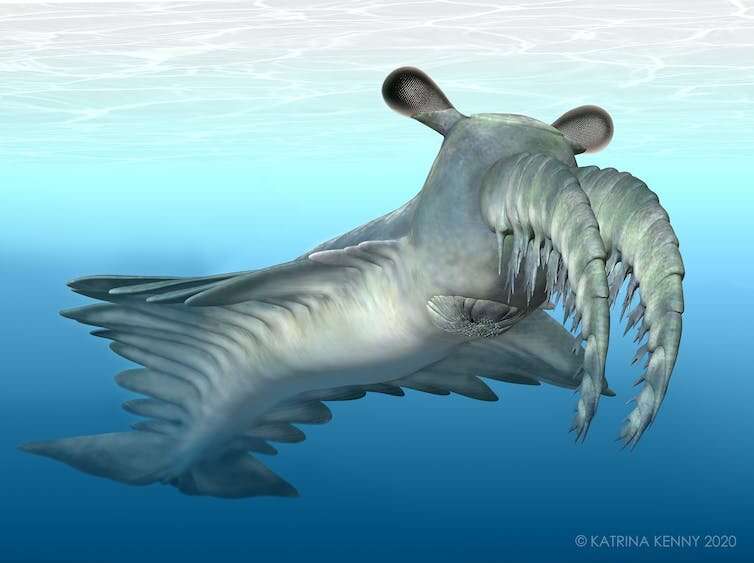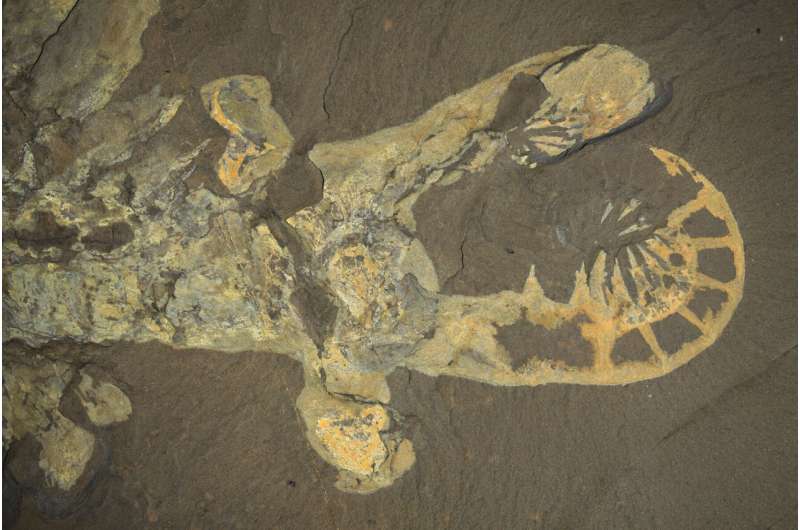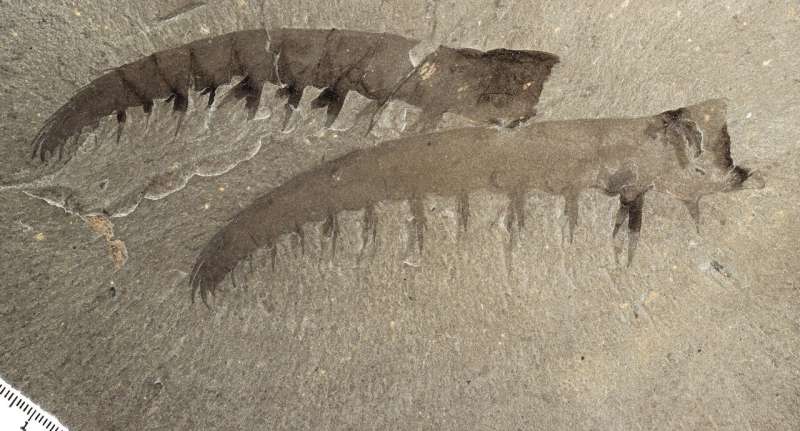This article has been reviewed according to Science X's editorial process and policies. Editors have highlighted the following attributes while ensuring the content's credibility:
fact-checked
peer-reviewed publication
trusted source
proofread
Apex predator of the Cambrian likely sought soft over crunchy prey

Biomechanical studies on the arachnid-like front "legs" of an extinct apex predator show that the 2-foot (60 centimeter) marine animal Anomalocaris canadensis was likely much weaker than once assumed. One of the largest animals to live during the Cambrian, it was probably agile and fast, darting after soft prey in the open water rather than pursuing hard-shelled creatures on the ocean floor. The study is published in the journal Proceedings of the Royal Society B.
First discovered in the late 1800s, Anomalocaris canadensis—which means "weird shrimp from Canada" in Latin—has long been thought to be responsible for some of the scarred and crushed trilobite exoskeletons paleontologists have found in the fossil record.
"That didn't sit right with me, because trilobites have a very strong exoskeleton, which they essentially make out of rock, while this animal would have mostly been soft and squishy," said lead author Russell Bicknell, a postdoctoral researcher in the American Museum of Natural History's Division of Paleontology, who conducted the work while at the University of New England in Australia.
Recent research on the armor-plated, ring-shaped mouthparts of A. canadensis lays doubt on the animal's ability to process hard food. The latest study set out to investigate whether the predator's long, spiny front appendages could do the job instead.

The first step for the research team, which included scientists from Germany, China, Switzerland, the United Kingdom, and Australia, was to build a 3D reconstruction of A. canadensis from the extraordinarily well-preserved—but flattened—fossils of the animal that have been found in Canada's 508-million-year-old Burgess Shale. Using modern whip scorpions and whip spiders as analogs, the team was able to show that the predator's segmented appendages were able to grab prey and could both stretch out and flex.
A modeling technique called finite element analysis was used to show the stress and strain points on this grasping behavior of A. canadensis, illustrating that its appendages would have been damaged while grabbing hard prey like trilobites. The researchers used computational fluid dynamics to place the 3D model of the predator in a virtual current to predict what body position it would likely use while swimming.

The combination of these biomechanical modeling techniques—used together in a scientific paper for the first time—paint a different picture of A. canadensis than was previously assumed. The animal was likely a speedy swimmer, zooming after soft prey in the water column with its front appendages outstretched.
"Previous conceptions were that these animals would have seen the Burgess Shale fauna as a smorgasbord, going after anything they wanted to, but we're finding that the dynamics of the Cambrian food webs were likely much more complex than we once thought," Bicknell said.
More information: Raptorial appendages of the Cambrian apex predator Anomalocaris canadensis are built for soft prey and speed, Proceedings of the Royal Society B: Biological Sciences (2023). DOI: 10.1098/rspb.2023.0638. royalsocietypublishing.org/doi … .1098/rspb.2023.0638
Journal information: Proceedings of the Royal Society B
Provided by American Museum of Natural History




















